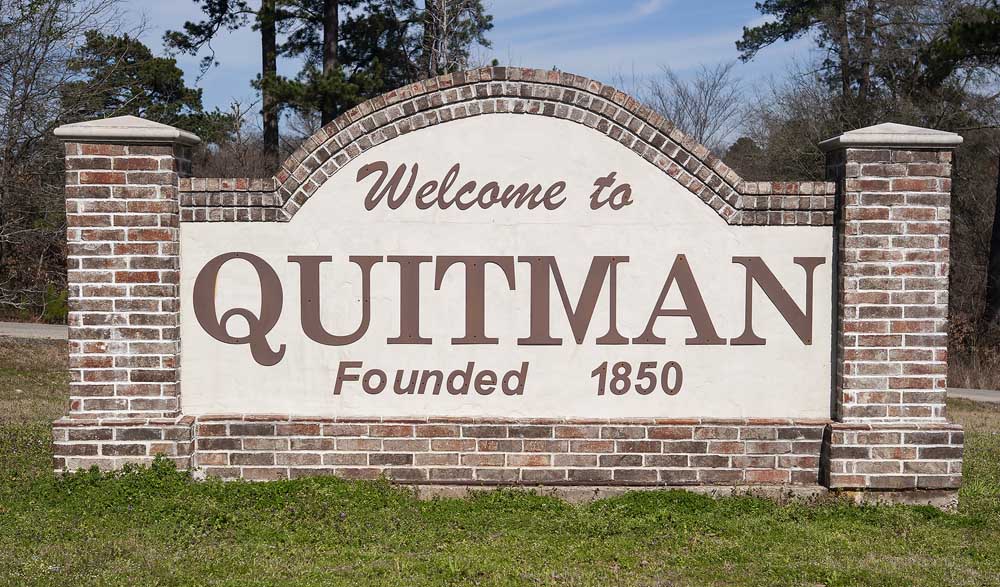Still Buffering: People’s deployed a $36 million fiber network in East Texas
Published 4:00 pm Saturday, April 13, 2019

- (Sarah A. Miller/Tyler Morning Telegraph)
RAINS COUNTY — A series of white posts with orange caps are leaning against the fences on farms here every few hundred feet.
They’re on the side of U.S. Highway 69 between Alba and Emory, and Texas Highway 19 between Emory and Canton, and run along many other rural roads in northeast Texas.
These markers identify fiber-optic cables buried deep in the ground. They’re part of a $36 million network that a local telecommunications company started building almost a decade ago.
Fiber-optic cables are long, very thin strands of glass that use light to transfer data quickly. The technology can deliver the fastest broadband speeds available when run directly to a home or business.
As part of a stimulus package passed to combat the Great Recession, the U.S. Department of Commerce awarded a grant to Peoples Telephone Cooperative Inc. to lay 659 miles of fiber throughout 13 counties in northeast Texas.
The new technology network would be called the East Texas Medical and Educational Fiber-Optic Network, tripling the existing 221 miles of fiber-optic cable in Camp, Delta, Fannin, Franklin, Hopkins, Hunt, Lamar, Rains, Red River, Smith, Titus, Van Zandt and Wood counties.
The goal was to add direct connections for 50 schools, 107 government buildings, 23 health care providers and seven community colleges, according to federal grant documents.
Having the fiber ring throughout the vast region would then help facilitate faster and more affordable broadband service for 100,000 households and 10,000 businesses, the grant documents say.
The federal grant was for $28.8 million, and Peoples matched $7.2 million, for a project cost of $36 million, according to grant documents. The grant was awarded in August 2010, according to the company website, and was completed in September 2013, according to grant documents.
Today, fiber-optic cables run directly to homes and businesses in East Texas. The Quitman Public Library was able to use a federal grant to have Peoples run fiber, offering 100 Mbps downloading and uploading speeds. The company also offers free Wi-Fi in the local park.
Joey Hamm, a sales engineer for Peoples, said that while the company dates back decades, it really started branching out after the federal grant, and had a lot of interest from companies. He said the medical community was especially interested.
Hamm said manufacturing companies benefit because some of the complex software the companies use needs a rapid broadband speed. They tend to be in the downtowns and village centers in the company’s coverage area, making it harder for the fiber to reach rural residential customers.
When a potential customer calls saying they only have satellite internet, he said the company does its due diligence to see if it can serve the customer.
“We try to diversify and pull some wireless rabbits out of the hat every now and then,” he said.
Jordana Barton, a senior adviser for the Federal Reserve Bank of Dallas, said grants made available during the Great Recession made progress on getting broadband to more areas, but the lowest-income residents in rural areas are still struggling.
“We can’t see it as final, that you do that investment and everything works,” Barton said. “Communities need to learn to expand their broadband networks. They need to see that they can leverage what they have for sure, to make it available to low- and moderate-income communities.”
Barton said local governments will need to invest in fiber-optic networks and view them as community assets. She called fiber-optic technology “future-proof” because the bandwidth is so high that everyday devices haven’t even caught up to it.
The Federal Communications Commission announced Friday that it will be renewing an existing $2 billion broadband subsidy program, for 10 years. It will provide about $20.4 billion over a decade to providers, with the goal of connecting up to 4 million rural homes and small businesses to high-speed internet.
The agency spent $34.5 billion on rural-broadband network subsidy programs from 2010 to 2017, according to the Government Accountability Office.
Mcxie Hurst, the marketing manager for Peoples, said the process of bringing more fiber-optic cable to East Texas started even before the grant to Peoples, out of a desire to get rural broadband to match what was happening in larger cities.
However, she said there are areas in the company’s service area with so few homes that the company would not make enough money from the subscribers after spending the money to run the fiber-optic cables out to the homes.
“We don’t serve everyone,” Hurst said. “We would love to say that we serve everyone, but we don’t. With deploying broadband there are definitely obstacles. … If you come to our territory and you go 2 miles, how many subscribers do you see? Well we’re looking at the difference between 50 or two.”
TWITTER and INSTAGRAM: @_erinmansfield






